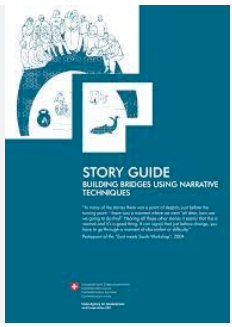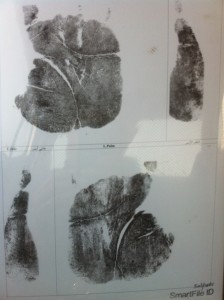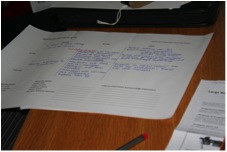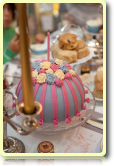A year or so back while I was in Colombia I was asked to do an interview for publication in Brasil. It was about the role of storytelling as a effective technique for Knowledge Management and I thought I’d share (in English) some of the answers I gave then which I believe are still really relevant today. Here’s why:
Last week in Tehran as part of Stage 2 of an exciting KM project I have been invited to work on I was in a room with a dozen or so senior managers and engineers. We were trying to map a process to see where it could be enhanced / reengineered by embedding KM techniques.
There were flow diagrams, boxes and arrows. The process (and the engineer describing it) came to life when he was invited to ‘tell us a story about what happened’. He opened up – it was as if I had given him permission to be himself and let go of ‘corporate or technology speak’. He then went onto describe what we styled ‘The Lube Oil Pump Incident’.
At the conclusion (and in the following day’s sessions) our sponsor and I encouraged everyone talking about a process to use narrative and to think of a title for their story.
It brought back two questions I was asked for the Brasilian article which I conducted while I was Managing Partner of Sparknow LLP:
Why stories? What is so special about them?
Hi Ana, thank you for this opportunity. Let me tell you why I think the use of narrative (storytelling) is a hugely powerful and insightful technique not merely for use in organizational KM. Stories have the power to unhinge and unearth insights, experiences and emotions often hidden in the jargon and protocols of corporate world.
Sparknow’s tradition in using story in KM goes back to the late 90’s when the Founder Victoria Ward commissioned Carol Russell (a storyteller with origins in Jamaica and story roots in Ghana) to write and tell a story about the KM journey at one of the UK’s leading Banks.
Not long after ‘Corporania’ was completed and shared to much acclaim Sparknow was running a series of open sessions at the KM Europe conference held in Den Haag. Among the attendees was a Geographer from Switzerland who had recently been asked to head up knowledge management at Swiss Agency for Development and Cooperation (SDC) in Bern. Manuel wanted to explore story-telling tools as a way to increase knowledge transfer between the Agency and its partners, different places, and the edges of the organization and the centre; that began a 5-year joint exploration that culminated in the production of Building bridges, using narrative approaches to knowledge management still viewed by many as one of the most useful works on organizational storytelling, and tangible evidence of how effective the use of story can be in KM.
I digress. To illustrate the point a bit more clearly. Everyone can remember their best teacher or professor and I’m sure they were good because they shared anecdotes and stories that brought a topic to life. My law teacher was brilliant at describing in a humorous way cases that illustrated the law of tort. Moreover great leaders tend to be adept at using stories to engage and communicate, its one of their core skills. So sharing lessons, bringing strategies to life, getting messages out across the organization, getting buy in to new ways of working and perhaps most importantly hearing what people actually think and care about are all improved by the use of a story in whatever form it is told. I’ll talk more about that later.
For me a big turning point was conducting an interview as part of an inquiry on behalf of the UK Tax & Revenue. We were asked to find a way of augmenting quantative surveys to identify among other things how clients (taxpayers) perceived them and the help they gave. While the interviews were but 20 minutes they were constructed in such a way as to encourage the interviews to tell the stories of their experiences in seeking help.
This particular interview which ended up being called ‘tippex and the kitchen table’ helped paint a graphic picture (through the words of the interviewee) of what it felt like to be filling in a tax form which you had to keep correcting through a lack of knowledge while running your own business and bringing up two children.
How is this relevant to KM? By playing back the interview (with permission) to a wider audience it set the backdrop for potential changes in the way the department worked with clients.
Stories are prone to misinterpretation. Is there the danger of that causing problems in communication? If so, how can that be prevented?
Context is key. What I takeaway from a story might be different to you because of when and where I hear or read it and what my knowledge base is. The same though applies to every form of communication. How many times do organizations seize up because of poor email practices and verbosity? This is a real issue across continents and languages and I can recall how the knowledge transfer in an R&D function stopped purely because of a different style of email communication.
The way to reduce the potential for misunderstanding is to give people the skills, the confidence and the equipment to identify, collect and share stories. And to ensure they are targeted at the right audiences in a manner that can be understood. Here is how we’d go about tackling the issue of whom to target and what to share with them. This applies equally to a KM programme as to a piece of engagement or communications.
1 | Develop a strategic story that explains the direction in which their organization is heading, the prizes, the pitfalls and what’s expected of them. Bring it to life through words, images, etc that can be used to explain it to everyone with an interest in your organization. This provides a context for more specific communications and discussions.
2 | ‘Support the strategic story with a series of smaller, individual ‘stories’ – accounts of people’s experiences in parts of the organization. These smaller stories can be used to bring the strategy to life, generate enthusiasm, spark ideas, resolve dilemmas, spread thinking and initiate conversations.
3 | Create resources and assets to enable leaders and managers to put the story to work. Deliverables could include an engagement programme or roadmap, communication materials and experiences to bring the story to life, a story database, workshop designs and agendas, toolkits, training and ad hoc advice.














